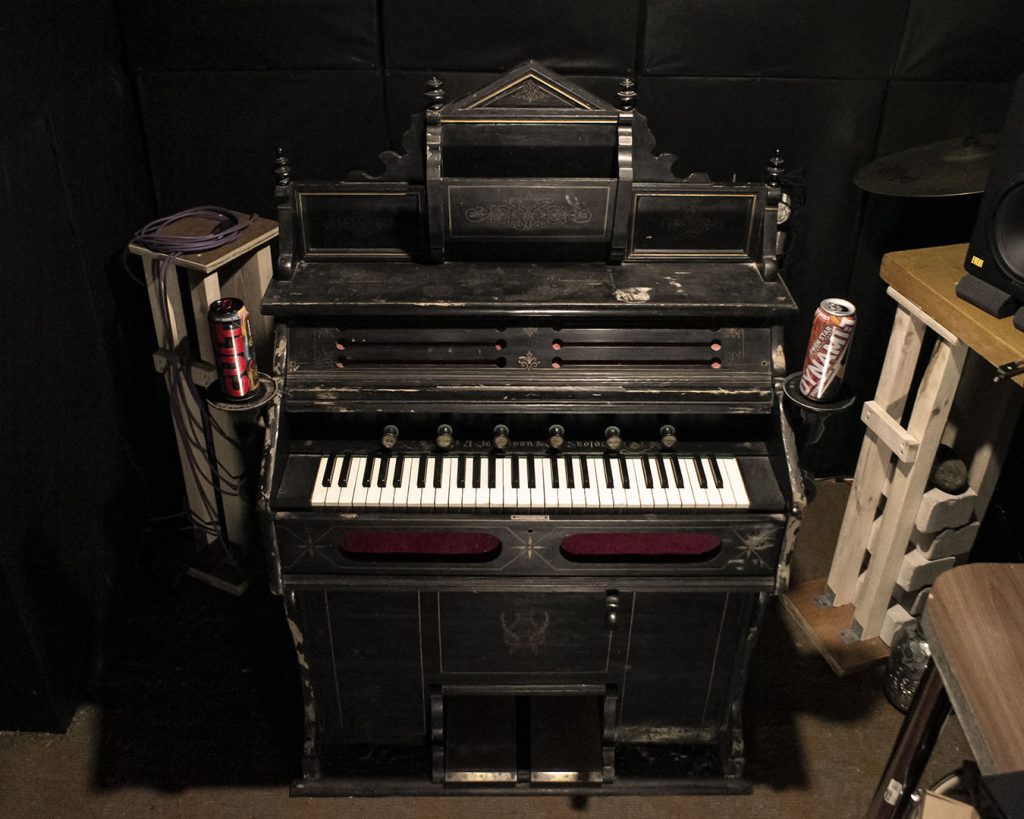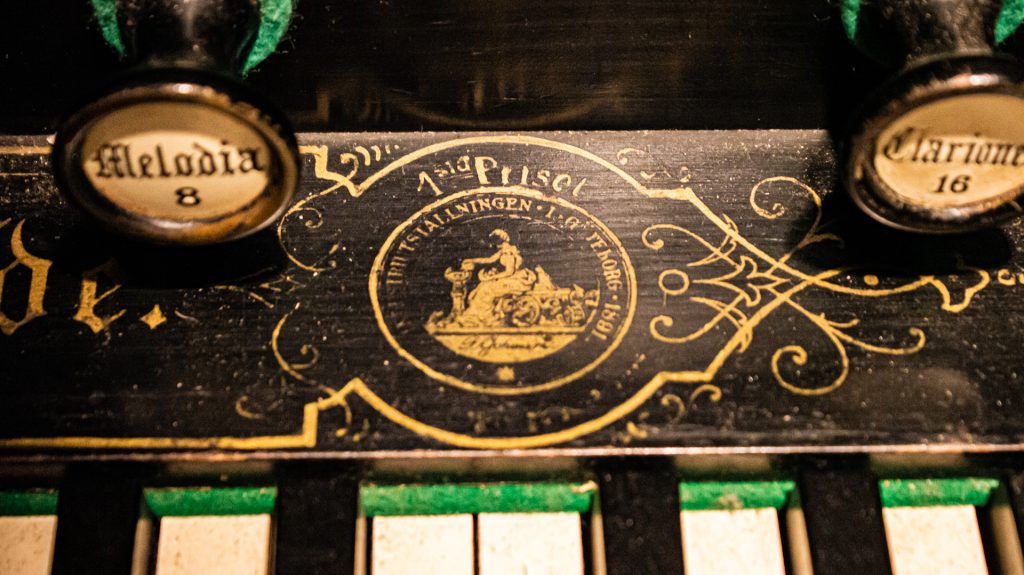We bought a vintage pump organ from XIX century
Do you want analog warmth? This thing is so analog, it has wooden filters. Forget vacuum tubes, this thing can house stereo candles and lanterns. It’s also not tuned to A=440 Hz but 442 Hz, so its tuning isn’t even up to what we’re used to today.
We have no idea who made them, it could be coachbuilt in small quantities. What we do know is what it says on the organ:
P.U. Johanson & D Sköfde
Probably made in Gotheborg 1891, Sweden.
If you can identify and provide more information on its origin – let us know. Our googling didn’t fruit any information.
The organ is also a bit broken – a couple of keys are sticky, the first octave E is broken, some couplers aren’t working. It also creacks, makes all sorts of noises of its age, the bag of the bellows may be torn slightly.



Now, even though they are broken, they are still capable of breaking hearts – we decided to play with them a little.
Pardon the wacky performance, since it’s recorded at -15 Celsius, with frozen fingers, while trying to avoid keys that tend to get stuck. The cold temperature probably affected the tuning as well.
Get some sad here:
The sound is so dry, because we’re in the Foley studio and we have removed most of the panels and woodwork, to get the mics as close as possible to the reeds.
The recording here is done with two AKG P420’s in Mid-Side configuration near the organ and two AKG P17’s two meters above it, left and right, inverted stereo in post and balanced, to counter the stereo difference between the low and high notes.
Why???
To start with – when we joined forces to work on the full length feature film Tabasco, Marius volunteered to compose the score for the movie. The movie is themed around rural Lithuania and the main instrument in that culture is an accordion.
There are also several performances done with the accordion in the movie, which led to Marius making a decision, that the foundation of the entire score will be based around reed instruments.
The AI algorithms probably sensed that and he found these organs by accident on our local classifieds. And just because he’s insane, he immediately bought them.

The unlikely rumour.
The organ was kept in a dry storehouse, so there’s no rot at all. The chap who was selling the organ, told a story, that this organ has been stolen by the Lithuanian folk hero outlaw Tadas Blinda from some sort of noble manor.
Then they were inherited generation from generation, until he has bought them from Blinda’s grandson and that’s how they ended up at his storagehouse.
He’s selling them just because his wife ordered him to, because it’s taking a lot of space and are no longer used and broken.
After checking the date of manufacture, it appears that Tadas Blinda died before they were made, so the story is most likely vintage marketing.

The sound:
Just after pressing the first few keys, Marius understood that the majority of the Tabasco soundtrack is going to be composed with the organ. Not only because it produces a very old fashioned, soft and localized tone, but because you can hear everything else around the reeds.
The air coming out of the bellows, the pedals make a noise when pumped. You can hear it breath, you can modulate the loudness with the pedals, it will have noises made by the wooden linkages and cables. It sounds old and alive in the recording.
This summer we’re planning to restore them, fix all the keys, linkages, bellows, take care of the creaks and get some actual practice then, because it’s like playing a piano, while driving a bicycle.
And then we can hit record.
